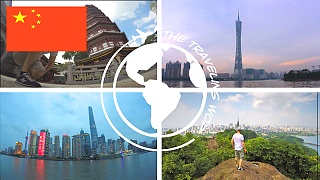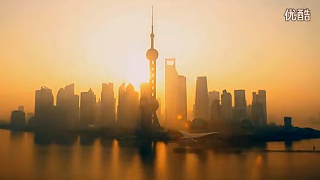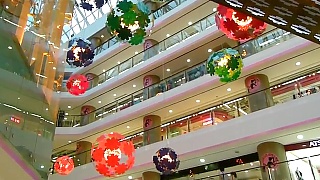Welcome to Shanghai!
Explore the dynamic city of Shanghai, where the past and present seamlessly blend together. From historic landmarks to modern skyscrapers, Shanghai offers an exciting mix of culture, cuisine, and experiences.
About Shanghai
Shanghai, China's largest city, is a global financial hub known for its futuristic skyline along the Huangpu River. The city is a melting pot of cultures and boasts a rich history influenced by its colonial past.
Key features of Shanghai include its iconic Bund waterfront, traditional gardens, vibrant nightlife, and diverse culinary scene.
Top Attractions
- The Bund: Walk along the historic waterfront to admire colonial-era architecture and panoramic views of Pudong.
- Yu Garden (Yuyuan Garden): Explore a classical Chinese garden with pavilions, ponds, and rockeries.
- Shanghai Tower: Ascend to the top of this skyscraper for breathtaking views of the city skyline.
- Oriental Pearl Tower: Visit the iconic TV tower with observation decks and a glass-bottomed walkway.
- Jing'an Temple: Experience the tranquility of this Buddhist temple in the heart of the city.
- Tianzifang: Wander through narrow alleyways filled with boutique shops, cafes, and art galleries.
- Shanghai Museum: Discover ancient Chinese art and artifacts in this world-class museum.
- French Concession: Stroll through tree-lined streets and explore trendy shops, bars, and restaurants.
- Shanghai Disneyland: Enjoy a magical day at the renowned Disney theme park.
Culture and History
Shanghai's culture reflects a blend of traditional Chinese heritage and international influences.
- Shikumen Architecture: Discover unique stone-gate houses in historic neighborhoods like Xintiandi.
- Traditional Arts: Attend a Shanghai opera or acrobatics show to witness local performing arts.
- Colonial Heritage: Learn about Shanghai's past through visits to former French and British concessions.
- Tea Culture: Participate in a tea ceremony to experience Chinese tea traditions.
Dining in Shanghai
Shanghai offers a diverse culinary landscape, from street food to Michelin-starred restaurants.
- Xiaolongbao: Try Shanghai's famous soup dumplings at Din Tai Fung or Jia Jia Tang Bao.
- Hairy Crab: Indulge in seasonal delicacies like Shanghai hairy crab (da zha xie).
- Shanghai Noodles: Taste savory noodles topped with braised pork or seafood.
- Street Food: Explore local markets for snacks like scallion pancakes, pot stickers, and stinky tofu.
- High-End Dining: Experience fine dining at upscale restaurants showcasing modern Chinese cuisine.
Shopping in Shanghai
From luxury boutiques to bustling markets, Shanghai is a shopper's paradise.
- Nanjing Road: Shop along China's premier shopping street for international brands and department stores.
- Tianzifang and Xintiandi: Browse through boutiques and designer shops in these trendy neighborhoods.
- Old Street (Nanshi): Explore antique markets and traditional handicraft shops near Yu Garden.
- IAPM Mall: Visit a modern shopping complex with luxury retailers and gourmet dining options.
- Fake Market (AP Plaza): Haggle for souvenirs, electronics, and clothing at this bustling market.
Getting Around Shanghai
Shanghai has a convenient public transportation system that includes metro, buses, taxis, and ridesharing services.
- Shanghai Metro: Navigate the city using the extensive subway network connecting major attractions and districts.
- Public Buses: Use bus routes to reach specific destinations; consider using mobile apps for route planning.
- Taxis and Ridesharing: Hail taxis or use apps like Didi for convenient transportation around the city.
- Bicycles: Rent bikes from bike-sharing stations to explore parks and scenic areas.
Where to Stay in Shanghai
Choose from a range of accommodations in Shanghai, from luxury hotels to budget-friendly hostels.
- Luxury Hotels: Experience world-class hospitality at luxury hotels along the Bund or in Lujiazui.
- Boutique Hotels: Stay in stylish boutique hotels offering personalized services and unique designs.
- Hostels and Guesthouses: Budget-friendly options with shared facilities, ideal for backpackers and solo travelers.
- Apartments and Rentals: Rent serviced apartments or vacation homes for a comfortable and homely stay.
Practical Tips for Visitors
- Best Time to Visit: Spring (March to May) and autumn (September to November) offer pleasant weather.
- Language: Learn basic Mandarin phrases; use translation apps for communication.
- Currency: Use Chinese Yuan (CNY); major credit cards accepted in tourist areas.
- Etiquette: Respect local customs and manners; avoid public displays of affection.
- Safety: Be vigilant of pickpockets in crowded areas; carry copies of important documents.
- Internet Access: Purchase a local SIM card for mobile data; free Wi-Fi available in many cafes and public places.
Enjoy Your Trip to Shanghai!
Get ready to immerse yourself in the energy and excitement of Shanghai. Whether you're fascinated by history, captivated by the skyline, or indulging in delicious cuisine, Shanghai promises an unforgettable travel experience.
Shanghai is one of China's most dynamic and cosmopolitan cities, blending a rich history with modern skyscrapers and vibrant culture. Here's what you need to know as a tourist visiting Shanghai:
Historical and Cultural Landmarks:
The Bund: This iconic waterfront promenade along the Huangpu River features colonial-era buildings on one side and futuristic skyscrapers on the other, offering stunning views of Shanghai's skyline.
Yu Garden: Dating back to the Ming dynasty, Yu Garden is a classical Chinese garden with pavilions, ponds, and rockeries. The nearby Yu Garden Bazaar is a great place to shop for souvenirs and traditional crafts.
Shanghai Museum: Home to an extensive collection of Chinese art and artifacts, including bronzes, ceramics, paintings, and calligraphy, the Shanghai Museum is a must-visit for history and art enthusiasts.
Jing'an Temple: One of Shanghai's most famous Buddhist temples, Jing'an Temple is known for its beautiful architecture, peaceful atmosphere, and towering golden Buddha statue.
Modern Attractions:
Shanghai Tower: Ascend to the observation deck of this iconic skyscraper, the tallest in China and the second-tallest in the world, for panoramic views of the city.
The Oriental Pearl TV Tower: Another iconic landmark, this futuristic tower offers observation decks, a glass-bottomed skywalk, and a revolving restaurant.
Shanghai Disneyland: Located in the Pudong district, Shanghai Disneyland offers a magical experience for visitors of all ages with its themed lands, attractions, and entertainment.
Shopping and Entertainment:
Nanjing Road: One of the world's busiest shopping streets, Nanjing Road is lined with department stores, boutiques, and restaurants. Don't miss the nearby pedestrian-friendly Nanjing Road East, known for its lively atmosphere and street performers.
Xintiandi: This upscale shopping, dining, and entertainment district features a mix of traditional Shikumen-style buildings and modern amenities, making it a popular destination for locals and tourists alike.
French Concession: Explore this historic neighborhood known for its tree-lined streets, charming cafes, boutiques, and art galleries.
Culinary Delights:
Shanghai Cuisine: Sample local specialties such as xiaolongbao (soup dumplings), shengjianbao (pan-fried dumplings), and Shanghai-style noodles.
Street Food: Wander through the city's bustling food markets and snack streets to taste a variety of street foods, from savory pancakes to grilled skewers.
Practical Tips:
Transportation: Shanghai has an efficient public transportation system, including the subway, buses, and taxis. Consider purchasing a rechargeable transportation card for convenience.
Language: While Mandarin is the official language, English is widely spoken in tourist areas, hotels, and restaurants.
Weather: Shanghai experiences four distinct seasons, with hot, humid summers and chilly winters. The best times to visit are spring (March to May) and autumn (September to November) when the weather is mild and comfortable.
Etiquette: Respect local customs and traditions, such as using polite language and avoiding loud behavior in public places.
Shanghai offers a captivating blend of old and new, with its historic landmarks, modern skyscrapers, vibrant culture, and delectable cuisine. Whether you're interested in history, architecture, shopping, or dining, Shanghai has something to offer every type of visitor.
 ShangHai City Guide
ShangHai City Guide














